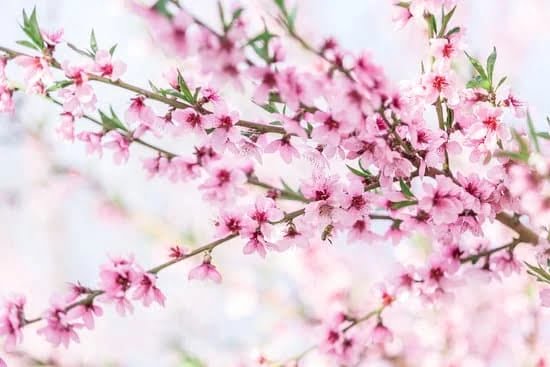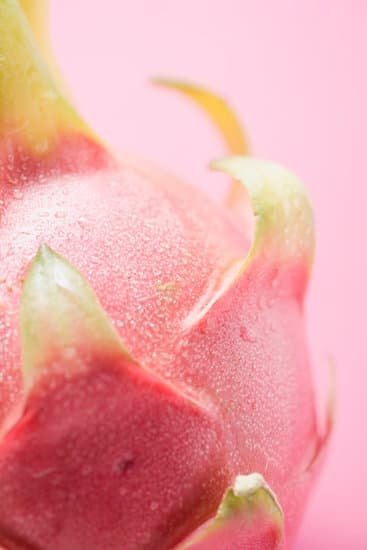Are you looking for landscaping ideas in West Texas that can withstand the unique challenges of the region? The arid climate, extreme temperatures, and low annual rainfall pose significant challenges for creating a beautiful and sustainable landscape. In this article, we will explore various landscaping ideas tailored specifically to the conditions of West Texas, offering solutions for incorporating native plants, implementing water-wise irrigation, and designing low-maintenance landscapes.
Landscaping in West Texas requires careful consideration of plant choices and hardscaping elements that can thrive in the harsh environment. The region’s limited rainfall and frequent droughts necessitate a focus on drought-tolerant plant options and water-wise irrigation practices to ensure the longevity of your landscape design. By incorporating native plants and creative hardscaping ideas, you can create an environmentally friendly and visually appealing outdoor space that complements the natural surroundings.
In addition to discussing plant options and hardscape design, we will also provide tips for selecting the best trees and shrubs for West Texas landscapes. Whether you’re a seasoned gardener or new to landscaping, our comprehensive guide will offer practical advice and resources to help you create a stunning and sustainable landscape in West Texas.
The Unique Challenges of Landscaping in West Texas
Landscaping in West Texas presents a unique set of challenges that homeowners and landscapers must navigate. With its hot, arid climate and limited water resources, creating a beautiful and sustainable landscape requires careful consideration and planning. Here are some of the unique challenges you may face when landscaping in West Texas:
1. Extreme Heat: West Texas is known for its scorching temperatures, especially during the summer months. This can make it difficult to maintain lush lawns and delicate plants without a reliable irrigation system.
2. Limited Water Supply: Water conservation is essential in West Texas, where drought conditions are common. Finding ways to minimize water usage while still keeping your landscape healthy and vibrant is crucial.
3. Soil Quality: The soil in West Texas tends to be sandy and low in organic matter, which can make it challenging for plants to thrive. Amending the soil with organic matter and choosing plants that are well-adapted to these conditions is key to landscaping success.
In light of these challenges, it’s essential to consider drought-tolerant plant options, incorporate native plants, implement water-wise irrigation techniques, and design low-maintenance landscapes when undertaking any landscaping project in West Texas. By embracing these strategies, you can create a beautiful outdoor space that thrives despite the region’s unique environmental factors.
Drought-Tolerant Plant Options for West Texas Landscapes
When it comes to landscaping in West Texas, one of the biggest challenges is the arid climate. However, there are several plant options that can thrive in these conditions and add beauty to your landscape. Here are some drought-tolerant plants ideal for West Texas:
1. Desert Willow (Chilopsis linearis) – This native tree or large shrub features beautiful trumpet-shaped flowers and is well-suited to the hot, dry climate of West Texas.
2. Blackfoot Daisy (Melampodium leucanthum) – With its cheerful yellow and white daisy-like flowers, this low-growing perennial adds a pop of color to any landscape while requiring minimal water.
3. Purple Prickly Pear Cactus (Opuntia macrocentra) – This striking cactus species boasts purple pads and bright yellow flowers, making it a unique addition to a xeriscape garden.
4. Red Yucca (Hesperaloe parviflora) – Despite its name, this plant is not actually a true yucca but rather a member of the agave family. It produces tall spikes of coral-colored flowers and requires very little water once established.
5. Texas Sage (Leucophyllum frutescens) – Also known as “Texas Ranger,” this evergreen shrub offers silvery-gray foliage and stunning purple blooms, all while being extremely drought-tolerant.
By incorporating these drought-tolerant plants into your West Texas landscape, you can create a beautiful and sustainable outdoor space that thrives in the challenging climate. These plants not only require less water but also attract native wildlife, adding to the ecological richness of your yard.
Additionally, using native plants helps to maintain the integrity of the local ecosystem while reducing the need for excessive watering and maintenance. For those looking to create a vibrant yet water-wise landscape in West Texas, these drought-tolerant plant options are an excellent choice.
Incorporating Native Plants Into Your West Texas Landscape
When it comes to landscaping ideas in West Texas, incorporating native plants into your landscape can be a game-changer. Native plants are well-adapted to the region’s climate and soil, making them more resistant to disease and pests. They also require less water and maintenance compared to non-native species, which is crucial in a region known for its arid climate.
Some popular native plant options for West Texas landscapes include the Purple Coneflower, Blackfoot Daisy, and Texas Red Yucca. These plants not only add color and texture to your landscape but also attract local wildlife such as butterflies and hummingbirds. By using native plants, you are not only creating a beautiful and sustainable landscape but also contributing to the preservation of the region’s natural ecosystem.
In addition to their environmental benefits, native plants can also save you time and money on maintenance. With their minimal water requirements and resilience to extreme weather conditions, they are an ideal choice for busy homeowners looking to create a low-maintenance landscape. Whether you are looking to add some native wildflowers or shrubs to your yard, incorporating these plants into your West Texas landscape can transform your outdoor space while preserving the natural beauty of the region.
| Native Plant | Description |
|---|---|
| Purple Coneflower | A hardy perennial with purple daisy-like flowers that attracts butterflies. |
| Blackfoot Daisy | An evergreen ground cover with white daisy-like flowers that thrives in hot and dry conditions. |
| Texas Red Yucca | A succulent plant with tall spikes of red or coral-colored flowers that is drought-resistant and adds a striking architectural element to the landscape. |
Creative Hardscaping Ideas for West Texas Yards
When it comes to landscaping ideas in West Texas, hardscaping can be an important aspect to consider. With the unique challenges of the region, including hot and dry conditions, incorporating creative hardscaping ideas into your yard can not only add visual interest but also practicality.
One of the most popular hardscaping features in West Texas yards is the use of gravel or crushed stone. Not only does this material provide excellent drainage for the soil, but it also creates a low-maintenance and drought-tolerant surface that is perfect for pathways, patios, and even decorative areas. Additionally, gravel can be easily integrated with native plants to create a cohesive and natural look for your landscape.
In addition to gravel, using rock or stone elements in your hardscape design can add texture and depth to your yard. From large boulders as focal points to strategically placed smaller rocks along walkways, incorporating natural stone into your landscaping can provide a sense of permanence and rugged beauty that complements the West Texas environment. Furthermore, rock and stone are incredibly durable materials that can withstand the harsh weather conditions of the region.
| Hardscaping Material | Benefits |
|---|---|
| Gravel/Crushed Stone | Excellent drainage, low-maintenance, drought-tolerant |
| Rock/Stone Elements | Texture, durability, rugged beauty |
Tips for Water-Wise Irrigation in West Texas
When it comes to landscaping in West Texas, water-wise irrigation is essential for a successful and sustainable yard. With the arid climate and limited water resources in the region, it’s important to make sure that your landscaping is designed to conserve water while still maintaining a beautiful and healthy outdoor space.
Choose Drought-Tolerant Plants
One of the best ways to practice water-wise irrigation in West Texas is by selecting drought-tolerant plants for your landscape. Look for native species that have adapted to the hot, dry conditions of the region. Some popular options include desert marigold, Texas sage, and agave. These plants require minimal watering once established, making them perfect for conserving water in your yard.
Install Efficient Irrigation Systems
When it comes to watering your landscape, using an efficient irrigation system can make a big difference in water conservation. Consider installing drip irrigation or soaker hoses, which deliver water directly to the root zone of plants, reducing evaporation and waste. Additionally, using a smart irrigation controller can help you adjust watering schedules based on weather conditions and plant needs, further optimizing water usage.
Practice Water-Saving Techniques
In addition to choosing the right plants and irrigation system, there are several other water-saving techniques that can be implemented in West Texas landscapes. Mulching around plants helps retain moisture in the soil and reduces the need for frequent watering.
It’s also important to regularly check for leaks in your irrigation system and fix them promptly to prevent water waste. By incorporating these strategies into your landscaping plan, you can create a beautiful outdoor space while minimizing water consumption in West Texas.
Designing a Low-Maintenance Landscape in West Texas
Choose Drought-Tolerant Plants
One of the key elements of a low-maintenance landscape in West Texas is selecting drought-tolerant plants. Succulents, such as agave and yucca, are ideal choices, as they require minimal water and thrive in the arid climate.
Other options include ornamental grasses like feather reed grass or blue grama grass, as well as perennials like blackfoot daisy and desert marigold. These plants not only require less water but also reduce the need for frequent maintenance, making them perfect for low-maintenance landscaping in West Texas.
Utilize Xeriscaping Principles
Xeriscaping, which focuses on creating landscapes that require minimal irrigation, is well-suited to the West Texas environment. By incorporating xeriscaping principles into your landscaping design, such as using mulch to retain moisture, grouping plants with similar water needs together, and utilizing efficient irrigation techniques like drip irrigation, you can significantly reduce the maintenance requirements of your outdoor space. This approach not only conserves water but also decreases the amount of time and effort needed to maintain the landscape.
Opt for Hardscaping Features
Incorporating hardscaping features into your West Texas landscape can contribute to a low-maintenance design. Consider adding gravel pathways, rock gardens, or stone patios to minimize the amount of turf that needs to be maintained. Additionally, installing artificial turf or synthetic lawn alternatives can eliminate the need for mowing and watering while still providing a lush appearance. These hardscaping elements not only reduce maintenance demands but also add visual interest and functionality to your outdoor space.
The Best Trees and Shrubs for West Texas Landscapes
When it comes to landscaping in West Texas, choosing the right trees and shrubs is crucial for creating a beautiful and sustainable landscape. The region’s hot and arid climate presents unique challenges, but there are several species of trees and shrubs that thrive in this environment. When selecting plants for your West Texas landscape, it’s essential to consider factors such as drought tolerance, heat resistance, and soil adaptability.
One excellent tree option for West Texas landscapes is the Desert Willow (Chilopsis linearis). This small tree is well-adapted to the region’s climate, with delicate, trumpet-shaped flowers that bloom in shades of pink or lavender. It is known for its ability to withstand drought conditions and provides a lovely focal point for any yard or garden.
Another great choice is the Texas Mountain Laurel (Sophora secundiflora), which features fragrant purple flowers and glossy evergreen foliage. This tree is not only drought-tolerant but also deer-resistant, making it an excellent addition to any West Texas landscape.
When it comes to shrubs, the Silver Ponyfoot (Dichondra argentea) is a fantastic option for West Texas gardens. This low-growing perennial features silvery foliage and thrives in dry, sunny conditions. It can be used as ground cover or cascading over walls or containers, adding texture and visual interest to the landscape.
Additionally, the Autumn Sage (Salvia greggii) is a popular shrub choice for its vibrant blooms in shades of red, pink, or purple. It requires minimal water once established and attracts pollinators, making it a valuable addition to any West Texas garden.
With careful selection and proper maintenance, these trees and shrubs can enhance the beauty of your landscape while thriving in the challenging climate of West Texas. By incorporating these plant options into your design, you can create a visually stunning and sustainable outdoor space that enhances the natural beauty of the region.
Remember that when deciding on landscaping ideas in West Texas selecting trees and shrubs that are well-suited for the area’s climate will lead to a more successful outcome overall.
Final Thoughts and Resources for Landscaping in West Texas
In conclusion, landscaping in West Texas presents some unique challenges due to the region’s arid climate and extreme temperatures. However, with the right approach and careful consideration of plant selection and hardscaping elements, homeowners can create beautiful and sustainable landscapes that thrive in this environment. By incorporating drought-tolerant plants, native species, creative hardscaping, and water-wise irrigation techniques, individuals can design low-maintenance yards that enhance the natural beauty of West Texas.
When considering landscaping ideas in West Texas, it’s important to prioritize sustainability and conservation. By choosing plants that are well-suited for the local climate and require minimal water, homeowners can reduce their environmental impact while still enjoying vibrant and attractive landscapes. Additionally, utilizing native plants not only promotes biodiversity but also contributes to the overall health of the ecosystem.
For those seeking further guidance on landscaping in West Texas, there are numerous resources available including local nurseries specializing in drought-resistant plants, landscaping professionals familiar with the region’s specific needs, and online forums where homeowners can share their own experiences and ideas. With thoughtful planning and a focus on environmentally-friendly practices, anyone can achieve a stunning landscape that thrives in the unique conditions of West Texas.
Frequently Asked Questions
What Grows Best in West Texas?
In West Texas, native plants like desert marigold, agave, and cactus tend to grow best because they are well-adapted to the hot and dry conditions of the region. These plants require minimal maintenance and water, making them a perfect choice for landscaping in West Texas.
What Is the Cheapest Landscape Fill?
When looking for the cheapest landscape fill, many people often opt for materials like mulch or compost. Mulch is an economical option that not only helps improve soil quality but also adds aesthetic appeal to the landscape. Compost is another inexpensive choice that enriches the soil and supports healthy plant growth.
How Do I Landscape My Backyard on a Budget?
Landscaping a backyard on a budget can be achieved by focusing on low-cost options like DIY projects, using recycled materials, and selecting low-maintenance plants. Incorporating native plants can lower costs and reduce water usage. Additionally, utilizing existing features in the backyard creatively can also help cut down on expenses when landscaping on a budget.

Welcome to my gardening blog! I am passionate about plants and enjoy sharing my knowledge and experiences with others. In this blog, I will write about everything related to gardening, from tips on how to get started to updates on my own garden projects.





